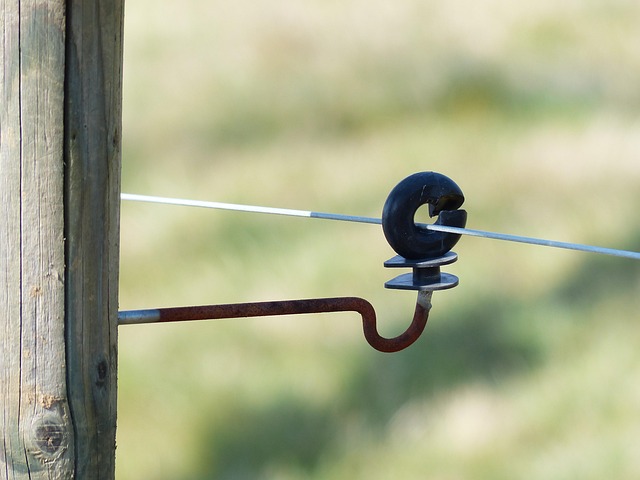Installing a fence is an exciting project for New Bedford, Massachusetts homeowners looking to enhance their outdoor spaces. This comprehensive guide offers practical DIY tips tailored to the unique considerations of New Bedford yards. From exploring suitable fence options and meticulous planning to assembly, installation, and maintenance, each step is broken down for a successful and long-lasting result. By following these expert suggestions, you’ll create a secure, aesthetically pleasing barrier that complements your home’s charm.
- Understanding Your Fence Options for New Bedford Yards
- Measuring and Planning Your Fence Layout
- Preparing the Ground for Installation
- Assembling and Attaching Your Chosen Fence Panels
- Securing the Posts and Adding Gates (if applicable)
- Final Touches and Maintenance Tips for Longevity
Understanding Your Fence Options for New Bedford Yards
When it comes to fencing your New Bedford, Massachusetts yard, homeowners have a variety of options to consider. The first step is understanding the different types of fences and their purposes. For example, wood fences are popular for their classic aesthetic and relatively low cost, while vinyl fences offer durability and maintenance-free care. Chain link fences are ideal for security and privacy, making them a favorite among homeowners with children or pets.
Each fence type has its own advantages and may suit different needs. Consider the size of your yard, the level of privacy desired, budget constraints, and personal style preferences when choosing. Additionally, local regulations and homeowner association (HOA) guidelines should be taken into account to ensure compliance and avoid any potential issues during installation.
Measuring and Planning Your Fence Layout
When planning a DIY fence installation in New Bedford, measuring and laying out your fence layout is a crucial first step. Start by identifying the perimeter of your desired fencing area, considering any existing structures, trees, or other obstructions that might affect your measurements. Use string and stakes to mark out the approximate position of your fence, ensuring it aligns with your property lines for legal compliance.
Next, determine the type of fence you want—wooden, vinyl, or chain-link—and consider its required height and style. Check local building codes and regulations to ensure your chosen design meets safety standards. From there, plan your fence’s layout on paper or use a fencing app to calculate the needed materials, ensuring precise measurements for each section of your new fence.
Preparing the Ground for Installation
Before installing your fence, preparing the ground is a crucial step. Start by clearing the area of any debris, plants, or rocks that might interfere with the process. This includes cutting down trees or shrubs that could obstruct the fence line. Ensure the ground is level and compacted to provide a solid base for your fence posts. Use a level to check the terrain and adjust as needed with topsoil or gravel to create a flat surface.
Mark out the perimeter of your desired fence line using stakes and string. This will help guide you during installation, ensuring straight lines and equal spacing between posts. Digging holes for the posts should be done precisely, following the manufacturer’s instructions for depth and width. Proper preparation ensures a sturdy and long-lasting fence structure.
Assembling and Attaching Your Chosen Fence Panels
When assembling your fence panels, follow the manufacturer’s instructions carefully. Most modern fencing comes with pre-cut panels and all the necessary hardware included. Start by laying out the panels on the ground to ensure they fit properly. Then, use the provided brackets or posts to attach each panel securely to the ground or existing fence structure. Make sure the panels are level and aligned before nailing or screwing them into place.
Double-check all connections for stability after assembly. Leave no gaps between panels as this can compromise both structural integrity and aesthetic appeal. Use high-quality fasteners suitable for outdoor conditions to prevent rusting and ensure your fence stands strong against New Bedford’s weather, enhancing the curb appeal of your New Bedford, Massachusetts home.
Securing the Posts and Adding Gates (if applicable)
Once your fence posts are firmly in place, the next step is securing them and adding gates if needed. For wooden fences, consider using metal brackets or bands to reinforce the connections between posts. This adds structural integrity and prevents post rotation. If you’re installing a gate, ensure it’s properly aligned with the posts. Use hinges securely fastened to both the gate and posts for smooth operation. Regularly lubricate hinges to prevent rusting and maintain easy opening and closing. For added security, consider adding a latch or lock mechanism at the top of your gate.
Final Touches and Maintenance Tips for Longevity
After completing the fence installation, it’s time to add those final touches that will ensure your new fence looks polished and serves its purpose well. Inspect the fence for any loose components or gaps and tighten or adjust as needed. Apply a fresh coat of paint or sealant if you’ve chosen to treat the wood, ensuring an even finish across all panels. This simple step not only enhances the aesthetic appeal but also protects the fence from elements that could cause damage over time.
Regular maintenance is key to keeping your new fence in top condition for years to come. Keep the fence clean by regularly brushing away debris and leaves. Inspect it for signs of rot, warping, or damage and address these issues promptly. A quick inspection every few months will help you catch potential problems early on, making repairs easier and less costly. Additionally, keeping vegetation trimmed back from the fence line prevents roots from damaging the structure over time.
